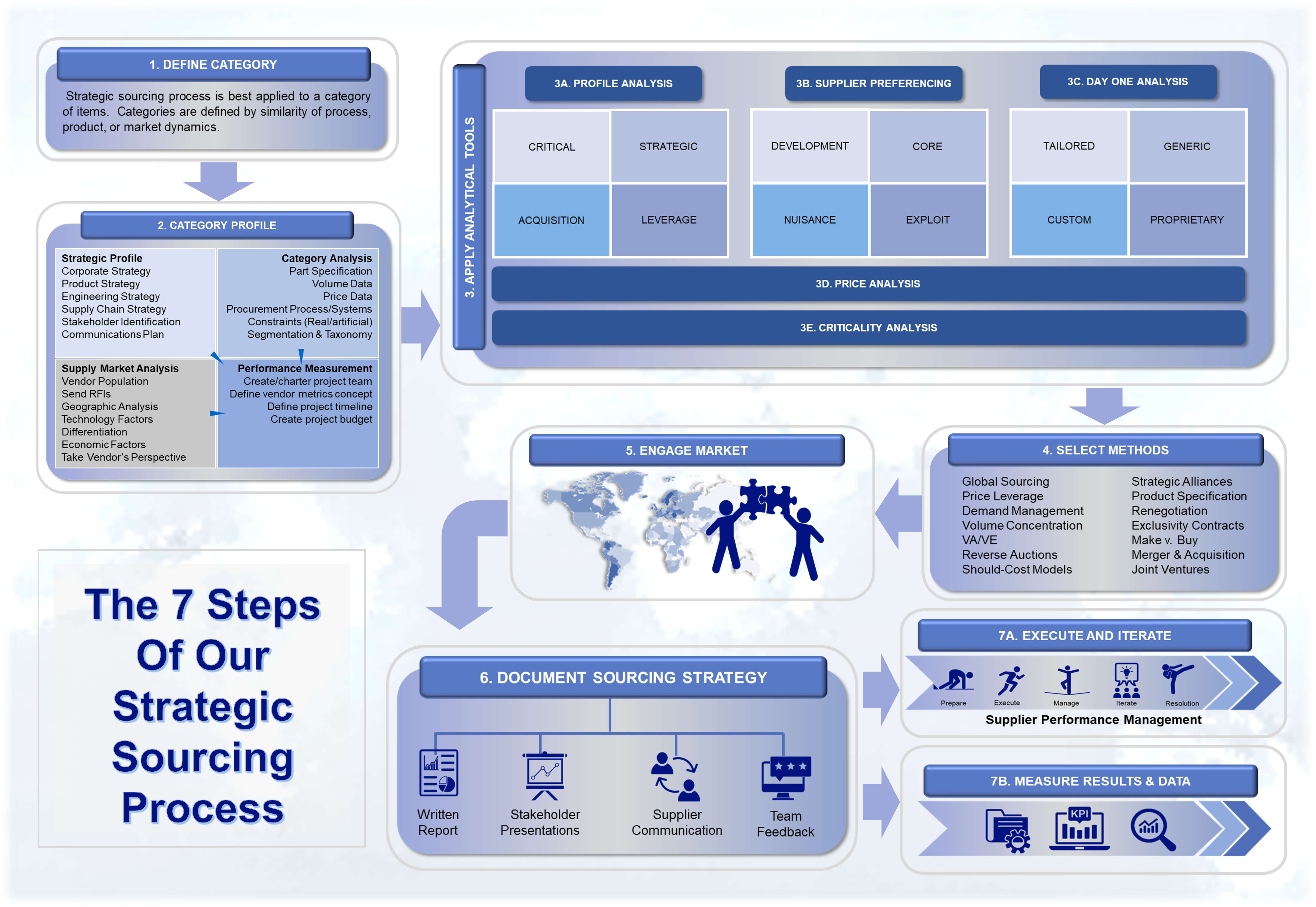OUR
STRATEGIC SOURCING PROCESS
- 1.Select the category – In this initial step, you decide which category of products or services for which you will develop a sourcing strategy. Category definition is critical to all following steps. You can define a category in any number of ways but typically you will group things that have similarities such as common product or process or for which the supply market has similar dynamics. While executing later steps (especially 2 & 3) it may become clear that category definition or segmentation could be improved, in which case you should revise the category and repeat/modify other steps appropriately.
- 2.Category Profile – In this step you perform a detailed study of the category you have selected to gather . You should review the strategic profile of your company (including corporate, product, and supply chain strategies), perform a detailed analysis of the category itself (purchased products, spend analysis, current vendor analysis, segmentation), understand the supply market (who are the suppliers, where are they, what is important to them, etc), and define an appropriate performance measurement scheme for the category and project.
- 3.Analyze – Once you have created a profile, there are a number of very powerful tools you can apply to understand the supply market and your position in it. Examples of these tools include market profile analysis, supplier preferencing, day one analysis, criticality analysis, and statistical analysis of any data you have gathered. During this step, you create an insightful breakthrough understanding of your category and can move on to execution.
- 4.Select Methods – The procurement world is rife with tools ranging from reverse auctions to strategic alliances. The tactics available to you are many, and it can be difficult to understand which to apply to what situations. Without a strategic sourcing process, procurement professionals will employ trial and error or must limit their efforts to tools they have been trained in. A strategic sourcing process solves this problem by helping the team apply the right methods to each supplier relationship and opportunity/problem that needs to be managed.
- 5.Engage the Market – This is the fun part where you take your analysis and your strategy and you begin to work with suppliers. With a good understanding of the market, your place in it, and the objectives of your strategy, you can be confident in using tools and tactics when interacting with suppliers to drive breakthrough results.
- 6.Document the Sourcing Strategy – It is important to document all of the definition, analysis, and concepts you developed during the sourcing strategy project. The strategy should form a foundation for your company that is used/updated for several years. The maintenance of this documentation will give the company and your team members the information they need to benefit from your work over the long term.
- 7a.Execute and Iterate – This is the fun part where you take your analysis and your strategy and you begin to work with suppliers. With a good understanding of the market, your place in it, and the objectives of your strategy, you can be confident in using tools and tactics when interacting with suppliers to drive breakthrough results.
- 7b.Performance Management – The underlying framework for your maintenance of a sourcing strategy is defined by how you measure your performance and that of your suppliers. You have to measure your performance to evaluate how effective your suppliers and your strategy have been and be ready to make changes to the strategy if performance is lacking.
